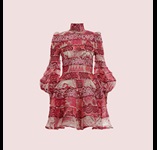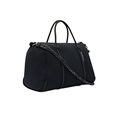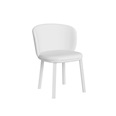READ NEXT
What do design rights protect?
A design right protects the visual appearance of a whole product that:
- Has physical and tangible form
- Is manufactured or handmade
- Is produced on a commercial scale.
How do designs work?
Here's a quick video that explains what design rights are and how they can protect your product.
A design right protects the overall visual appearance of new and distinctive whole products. These whole products should have physical and tangible form, be manufactured or handmade, and be produced on a commercial scale. For example, a couch, a car or a dress.
In the commercial world, design can mean a lot of things. But just because you’ve designed something, it doesn’t mean you can protect it with a design right.
A design right doesn’t protect how your product was designed, what your product does, what your product is made from, or designs not applied to a tangible product. For example, a logo.
Applying for a design right is a two-part process in Australia. When you register and certify your design, it gives you the exclusive right to use your design and authorise other people to use your design within Australia, a right that can grow in value and can be sold or licensed within Australia, and the ability to apply for the same design overseas within six months of your Australian application.
Your registered design right lasts up to ten years, with a renewal required after five years.
One thing to keep in mind is that an Australian design right only gives you protection in Australia. If you want protection in other countries, you’ll need to apply for it there.
Want to learn more, including how to apply? Check out our design rights page.
Examples of designs protected by design rights
Benefits of a design right
When you register and certify your design, it gives you:
- The exclusive right to use your design within Australia
- The exclusive right to authorise other people to use your design within Australia
- A right that can grow in value and can be sold or licensed within Australia
- The ability to apply for the same design right overseas (within six months of your Australian application)
- The right to take legal action against someone who uses your design without your permission.
What design rights don't protect
Design rights don't protect:
- Designs with no physical form, for example, concepts, processes and computer graphics
- The brand name or logo you've developed for your product
- How your product works
- The materials used in your product
- The size of your product
- Partial design features of a product
- The visual appearance of your product changing over time.
These designs can't be legally protected with a design right:
- Scandalous designs which would shock or offend the community
- Medals
- Certain coats of arms, flags, and emblems
- Bank notes or paper money
- Integrated circuit layouts
- A design prohibited under the Olympic Insignia Protection Act 1987
Designs which use the word ‘ANZAC’ can’t be legally protected without permission from the Department of Veterans' Affairs.
If your design uses words, images or knowledge created by an Aboriginal or Torres Strait Islander person, community or nation, you may be drawing on Indigenous Knowledge.
The misuse of Indigenous Knowledge can be disrespectful and offensive. It can undermine cultural practices and adversely affect economic opportunities available to Aboriginal and Torres Strait Islander communities.
Do you have more than one design?
In some cases, you can apply for more than one design in a single application.




